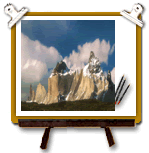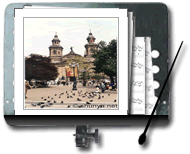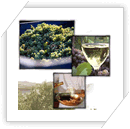Exciting culture in Latin America
-
Chile is a country with a population of slightly more than 15 million inhabitants, located on the south-western coast of South America. Its territory extends along a 4.300 km. strip
 of the American continent, with an average width of 173 km. To the north, Chile has a common border with Peru; to the east, with Bolivia and Argentina; to the west it extends into the Pacific Ocean; and to the south it reaches the South Pole, through the Chilean Antactic Territory.
of the American continent, with an average width of 173 km. To the north, Chile has a common border with Peru; to the east, with Bolivia and Argentina; to the west it extends into the Pacific Ocean; and to the south it reaches the South Pole, through the Chilean Antactic Territory. -
Capital :Santiago de Chile - founded in 1541.

When the first Spanish arrived, Quechua tribes inhabited the northern region, and Araucanian tribes inhabited the central region and the northern part of the sothern region. The Incas were in control of the northern area and part of central Chile. Warlike Araucanian tribes, who held the Incas back, dominated much of the rest of the country .
-
The first Spanish settlements were established in the mid-sixteenth century: Santiago in 1541 and Concepcion in 1550. Spanish settlers, mainly from Andalucia, were attracted to central Chile because of the pleasant climate and fertile soil. The settlers had to face repeated assults from the Araucanians. The on-and-off war with the Indian aborigines continued into the second half of the nineteenth century. More information...
-
La Isla de Pascua : Easter Island has long been the subject of curiosity and speculation.
 How and why did its inhabitants carve and transport the massive statues which surround the island? What remains of this culture today, and what lessons can we learn from their legacy?
How and why did its inhabitants carve and transport the massive statues which surround the island? What remains of this culture today, and what lessons can we learn from their legacy? -
 The art of wine making first arrived in Chile with the Catholic missionaries. Wine was needed to celebrate the sacrament at mass - so the padres began to plant and tend to their own vines. The first professional vineyards were recorded in Copiapo in 1554. It wasn't until the 1830's that wine making was taken seriously. Increased exchange with Europe brought not only vine clippings, but European expertise. The most notable of the European viniculturalists was Claude Gay, who brought over 60 clippings to Santiago, including all the principle grapes of Bordeaux. The clippings thrived in Chile's fertile central valley, and Chilean wine began to appear.
The art of wine making first arrived in Chile with the Catholic missionaries. Wine was needed to celebrate the sacrament at mass - so the padres began to plant and tend to their own vines. The first professional vineyards were recorded in Copiapo in 1554. It wasn't until the 1830's that wine making was taken seriously. Increased exchange with Europe brought not only vine clippings, but European expertise. The most notable of the European viniculturalists was Claude Gay, who brought over 60 clippings to Santiago, including all the principle grapes of Bordeaux. The clippings thrived in Chile's fertile central valley, and Chilean wine began to appear.
